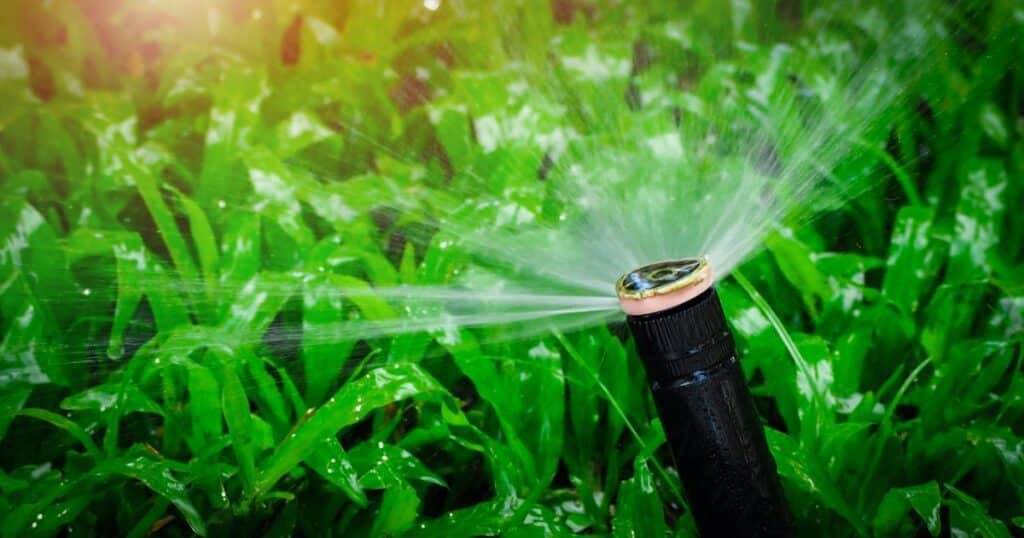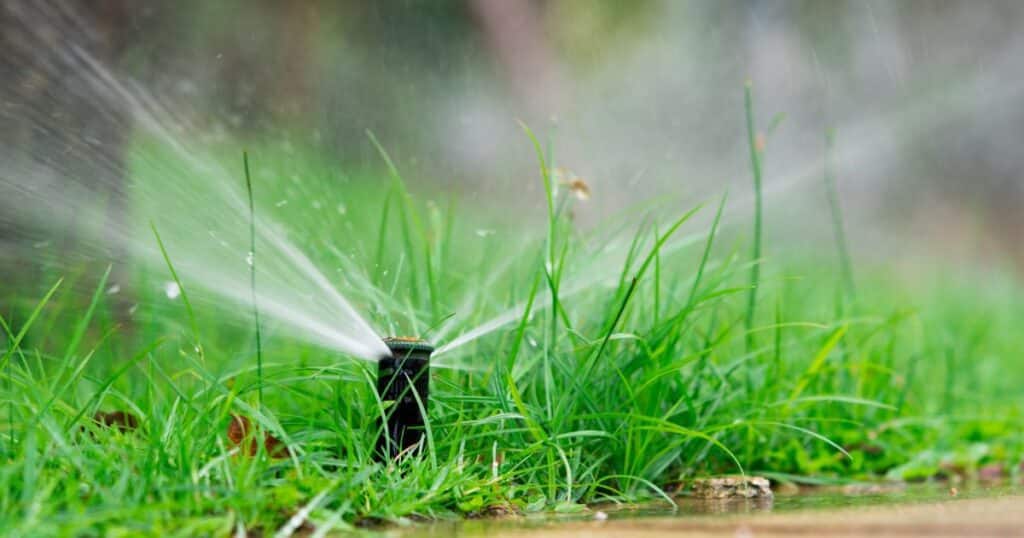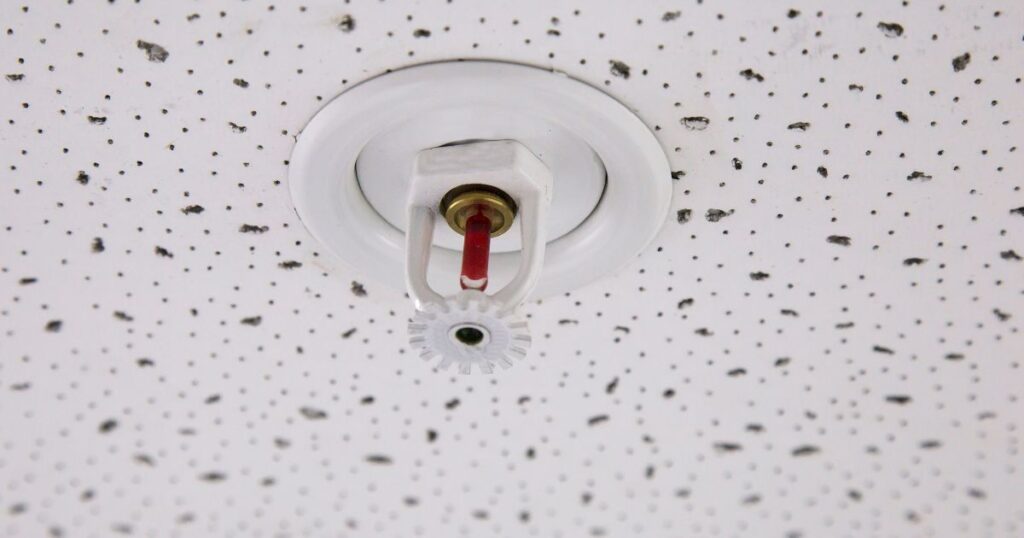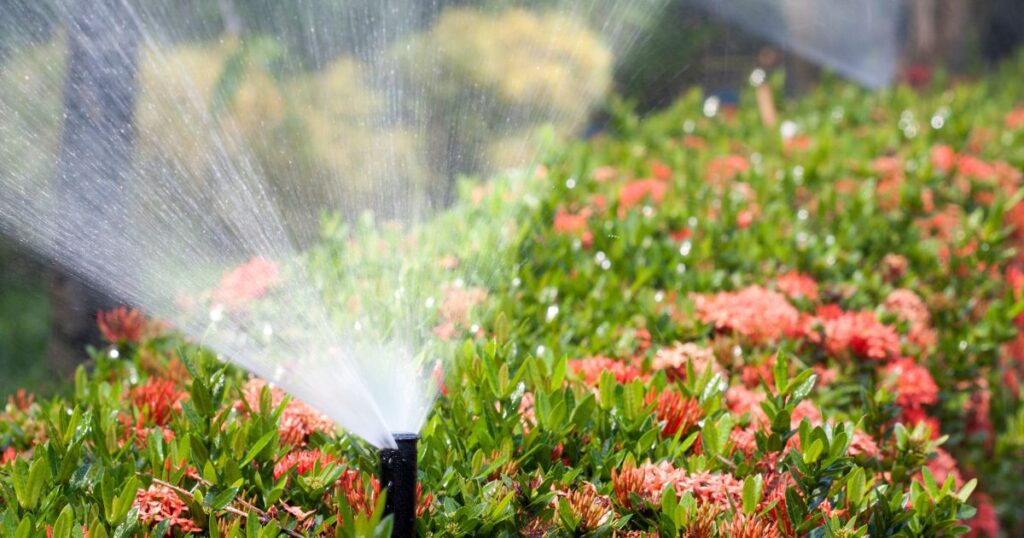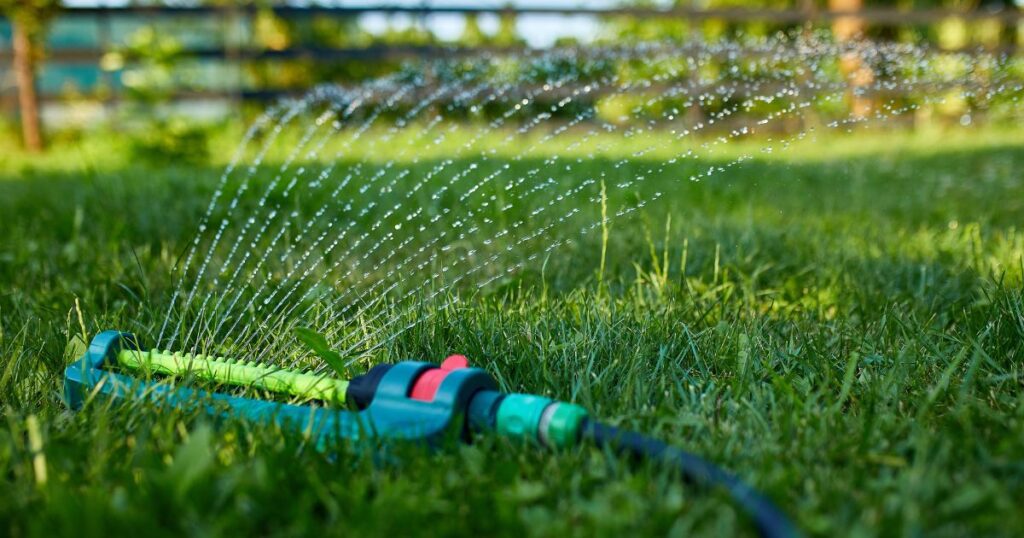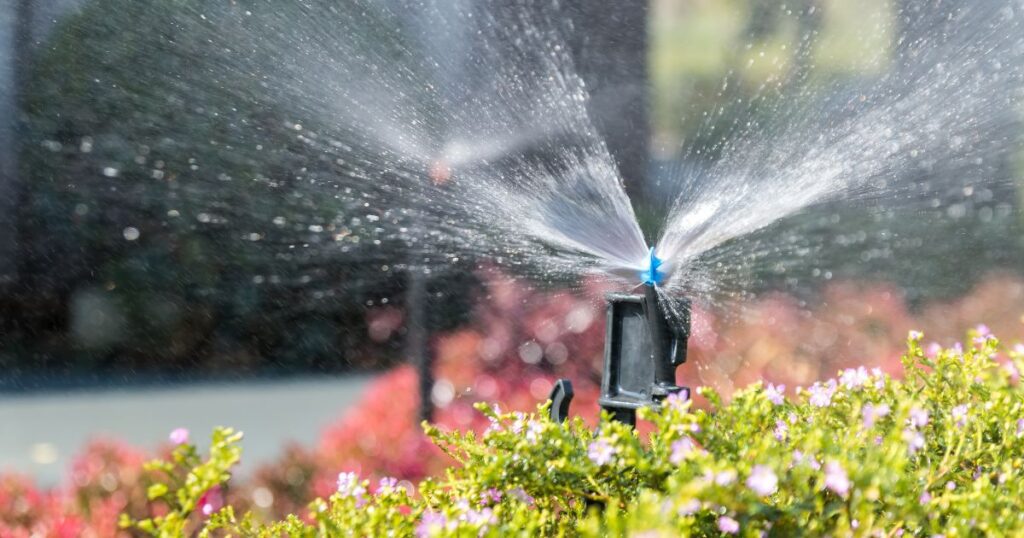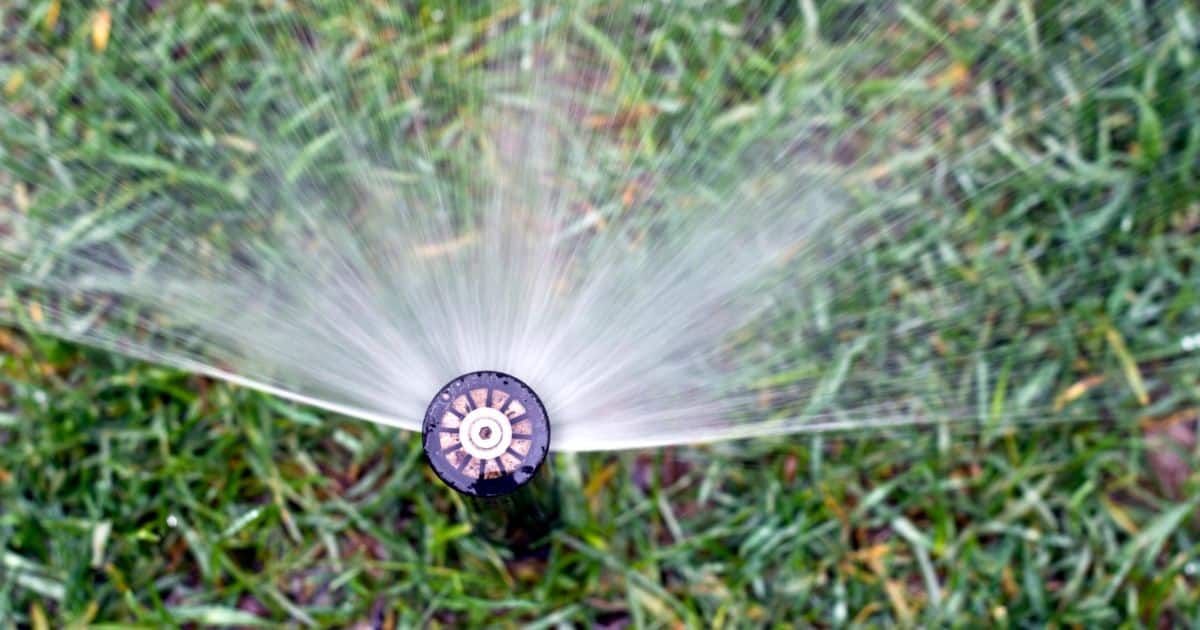
Are you on a mission to uncover the secret hiding spots of mischievous sprinkler heads? Well, get ready to embark on a thrilling adventure as we unveil the tricks on how to find a sprinkler head! With our expert tips and clever techniques, you’ll be a sprinkler head detective in no time. So, put on your detective hat, and let’s dive into the exciting world of discovering hidden sprinkler heads!
To find a hidden sprinkler head, start by visually inspecting your lawn for any signs of small circular or rectangular covers. You can also use a metal detector or a sprinkler head locator tool to help you pinpoint their exact location underground. Alternatively, if your sprinkler system has a map or layout, refer to it to determine the approximate positions of the sprinkler heads.
Explanation of the importance of finding a sprinkler head
It is essential first to understand how crucial it is always to maintain 100% functionality in every component of an irrigation system. A single malfunctioning or damaged sprinkler head can have implications ranging from dead grass patches on residential lawns all the way up to large-scale crop loss on the commercial farming property. It’s also important not only because broken parts can cause damage but because when one isn’t functioning properly within an automated zone – entire sections will often fail to work correctly due to uneven pressure throughout the entire irrigation line.
Never underestimate what one inch of a dry spot in your garden could do! If ignored long enough with no intervention needed, these small problems will lead into much more significant issues which could end up costing you thousands upon thousands in replacements and repairs.
Overview of the process of finding a sprinkler head
Finding a sprinkler head requires some knowledge and patience, and the process differs slightly depending on whether you have an underground or above-ground system. The first step is to identify what type of irrigation system you have. If your system is underground, start by locating the control box.
This box should be situated close to your home’s foundation on an outer wall. From there, follow the electrical wires that lead outward from this box until you reach the valve box.
Once you’ve located the valve box, turn on one zone at a time and watch for water spray. You should be able to identify where each sprinkler head is located by sight or sound.
If your system is above ground with visible pop-up heads, finding them should be relatively straightforward – walk around your yard looking for small metal or plastic covers that protrude from the ground. In either case, it can also be helpful to draw out a map of your property and mark where each sprinkler head is located once you’ve identified them; this way, if any problems arise in the future, it will be much easier to diagnose and fix them quickly without additional searching needed.
High-Level Overview
Explanation of the different types of sprinkler heads
Before searching for a sprinkler head, it is important to understand the different types of sprinkler heads that are available. Sprinkler heads can be classified based on their coverage area, spray pattern, and operating pressure. The four types of sprinkler heads are:
1. Pop-up spray heads: These types of sprinklers pop up out of the ground when water pressure is applied and can cover a small area. They are commonly used in residential settings.
2. Rotary nozzles: These types of sprinklers rotate in a circular motion to water a larger area than pop-up spray heads. They also have adjustable nozzle designs that allow for customized watering patterns.
3. Impact or impulse sprinklers: These types of sprinklers shoot water in an arc pattern and create a repetitive thumping sound when they reach the end of their rotation.
4. Gear-driven rotors: These types of sprinklers can cover large areas with high water pressure and have adjustable nozzles for customized watering patterns.
Discussion on the importance of knowing the type of sprinkler head before searching for it
Knowing the type of sprinkler head before searching for it is crucial because each type has unique characteristics that affect its location and performance. Understanding these differences will make finding and maintaining them much easier.
For example, pop-up spray heads need to be located close to each other to ensure complete coverage without any dry spots in between them, while gear-driven rotors need larger spacing between them due to their higher range coverage area. Moreover, rotary nozzles require careful attention when aiming them since this affects where they’ll disperse water most effectively.
Impulse or impact sprayers may not work well with rocky or uneven surfaces due to potential damage they could incur as well as having a limited range compared to other types. In addition, the type of sprinkler head also influences its maintenance requirements.
For instance, gear-driven rotors need to be regularly checked for obstruction or damage to ensure proper function and prevent wasted water. Overall, knowing the type of sprinkler head before searching for it can save time and effort while ensuring a properly functioning irrigation system.
How to Find a Sprinkler Head Using a Metal Detector
If you have an irrigation system in your yard, chances are that some of the sprinkler heads may be buried. This can make it difficult to locate them when they need repair or replacement.
Fortunately, you can use a metal detector to find buried sprinkler heads quickly and accurately. To start, make sure your metal detector is set for sensitivity and discrimination levels suitable for finding small metal objects like sprinkler heads.
Walk slowly over the area where you suspect the head is located, listening for a distinct signal from the detector. When you hear the signal, use a shovel to carefully dig around the spot until you uncover the head.
Keep in mind that some sprinkler heads may not have enough metal content to be detected by some detectors. In these cases, try using another method such as mapping software or consulting with an irrigation professional.
RELATED: How Deep Are Sprinkler Lines Buried
Finding Hidden or Obscured Sprinkler Heads in Tall Grass or Landscaping
Sometimes sprinkler heads can become obscured by tall grass or landscaping elements such as bushes or trees. In these situations, it is essential to know what signs to look for when searching for them. One tip is to look for wet spots on your lawn, which may indicate water spraying from an unnoticed sprinkler head.
Another trick is to follow irrigation lines from known heads until you locate one that leads underground. If all else fails, enlist a friend who can watch while you turn on different stations of your irrigation system so they can tell you where water sprays up from hidden locations.
Using Mapping Software to Locate Underground Irrigation Systems
Mapping software has revolutionized how homeowners and professionals approach locating underground systems like irrigation systems. Using specialized software designed specifically for this purpose makes it easier than ever before to detect areas where pipes and other buried components exist. When using mapping software, first make sure to have a detailed map of your property and the irrigation system in place.
Next, import this map into the software and start analyzing its features. Look for potential weak points or areas where items like sprinkler heads may have been placed.
Use the software to pinpoint the exact locations of buried components like pipes and valves. This is particularly useful when you need to locate a sprinkler head quickly for repair or replacement.
With mapping software, you can avoid costly errors and potentially damaging excavation mistakes that could negatively impact your property’s landscape. Locating sprinkler heads can sometimes be challenging, but with the right tools and techniques at hand, it doesn’t have to be.
Whether using a metal detector or mapping software – or even just following the signs – you can quickly find obscured or buried sprinkler heads on your property with ease. By taking these steps proactively, you’ll save time and money while maintaining a lush green lawn all season long!
The Difference Between Residential and Commercial Sprinkler Heads and How It Affects Their Location
When it comes to locating a sprinkler head, it’s important to understand the different types of sprinkler heads that are commonly used. One of the most significant differences is between residential and commercial sprinkler heads.
Residential sprinkler heads are usually smaller and less powerful than their commercial counterparts. They are designed to cover smaller areas, such as lawns or gardens, and use less water in the process.
As a result, they may be more difficult to locate due to their size and limited coverage area. Commercial sprinkler heads, on the other hand, are larger and more powerful than residential ones.
They are designed for use in larger areas such as parks, sports fields or golf courses where they need to cover a much larger area quickly. These types of sprinklers may be more easily located due to their size but require different techniques.
To locate residential sprinklers, one should look for small markers that indicate where the head is located along with some visual clues like wet spots on the grass indicating where they might be hidden. For commercial systems that span large areas like parks or golf courses, using a combination of data from maintenance records along with physical location markers can help narrow down search locations before physically inspecting each area for hidden systems.
The Impact That Weather Conditions Can Have On Locating A Sprinkler Head
Weather conditions can have a significant impact on locating hidden sprinklers as well. In dry weather conditions, it will be easier to spot damp spots around buried irrigation system components, but this also makes it harder when trying to find damaged ones since there will not be any standing water nearby. In rainy weather conditions or immediately after heavy rainfall tends to make it harder when trying to spot small indicators (like wet patches).
The same goes for snowfall which covers everything without leaving any telltale signs of where buried irrigation system components might be located. However, it is also important to note that weather conditions can affect the functionality of sprinkler heads – a cracked or damaged sprinkler head might not work properly in wet weather conditions and might not produce the same level of water coverage as a fully functional head.
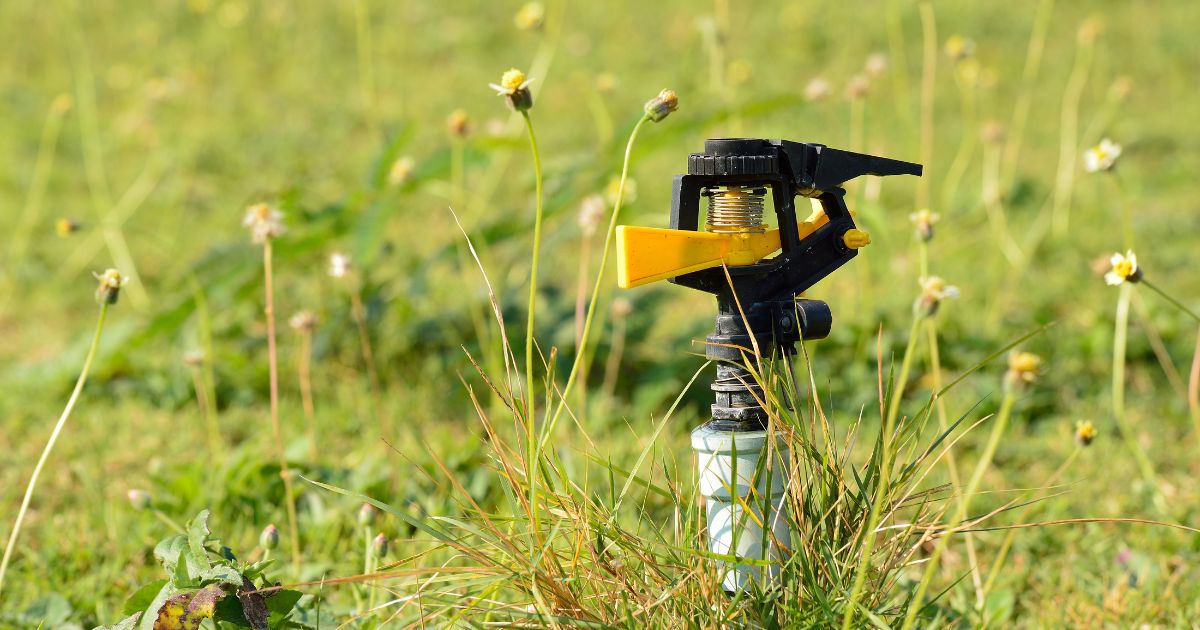
How to Identify Damaged or Malfunctioning Sprinkler Heads During the Search Process
During the search process, it’s important to keep an eye out for damaged or malfunctioning sprinkler heads. If you are looking for a residential irrigation system, make sure you have a list of all the locations so you know which ones are expected to be there and which ones aren’t.
Look for visible damage, like cracks in plastic casings and rusted metal parts in older systems. For commercial systems with larger areas, reviewing maintenance records can help identify areas where repairs may be needed before starting your search.
If you do find a damaged or malfunctioning sprinkler head during your search process, do not attempt to repair it on your own unless you have an experience with machine repairs and handling irrigation systems. It’s best left up to professionals as improperly repaired irrigation components can further damage the entire system leading to more costs down the road.
Frequently Asked Questions
How do you find a sprinkler head without digging it?
You can use a metal detector or a magnetic locator to find a sprinkler head without digging. These tools can detect the metal components of the sprinkler head, allowing you to locate it without the need for excavation.
How do you find a sprinkler head without turning on the water?
You can use a sprinkler head locator or a wire and valve locator to find a sprinkler head without turning on the water. These devices use electronic signals or radio frequencies to locate the position of the sprinkler head, making it easier to find without water flow.
How do you identify a sprinkler head?
Sprinkler heads are typically identified by their shape, size, and spray pattern. They may also have markings or labels indicating their type or specifications. Consult the manufacturer’s documentation or look for visual cues to help identify the sprinkler head.
How do I find a buried sprinkler valve?
To find a buried sprinkler valve, you can use a valve locator device that detects the electromagnetic field generated by the valve. These devices can help you pinpoint the location of the valve underground, making it easier to access and operate.
How deep are sprinkler heads buried?
Sprinkler heads are typically buried at a depth of 2 to 4 inches below the ground surface. This depth provides adequate coverage while also protecting the sprinkler head from damage caused by foot traffic or lawn equipment.
What tool would you use to locate sprinkler lines?
A pipe and cable locator, also known as a utility locator or a line locator, is the tool commonly used to locate sprinkler lines. These devices use electromagnetic signals or radio frequencies to detect the presence and path of underground pipes, helping you locate sprinkler lines without digging.
RELATED: How to Locate Sprinkler Lines: Best Techniques 2023
Conclusion
In this article, we have covered the importance of finding a sprinkler head and how to locate it with relative ease. We began with a brief introduction that highlighted why it is essential to know how to find a sprinkler head. We then discussed in detail the different types of sprinkler heads and the importance of knowing which type is installed before beginning the search process.
Next, we delved into niche subtopics that included locating buried sprinkler heads using metal detectors, tips for finding hidden or obscured sprinkler heads in tall grass or landscaping, and using mapping software to locate underground irrigation systems. We also provided insights into rarely known small details, such as differences between residential and commercial sprinkler heads and how weather conditions can impact the search process.
Overall, finding a sprinkler head may seem like an overwhelming task, but with proper knowledge and tools at your disposal, it can be accomplished efficiently. By following our outlined steps in this article: understanding the different types of sprinkler heads installed; knowing where to look for them; identifying damaged or malfunctioning ones; you will be well on your way to efficient water management and ensuring that your lawn or garden is adequately irrigated.
We hope you found this article informative and helpful in your quest to locate a sprinkler head. By incorporating these tips into your routine irrigation maintenance practices, you’ll save not only time but also money by avoiding costly repairs caused by undetected leaks or malfunctions in your system.
Remember always to take safety precautions when using any equipment for locating buried pipes or wires in the ground. Call a professional if you feel overwhelmed at any point during the search process.

